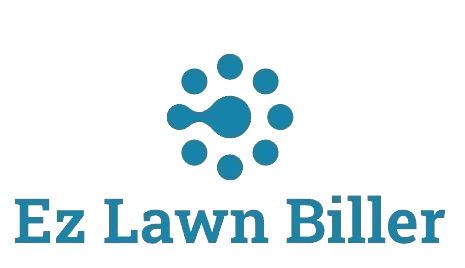Efficiently managing schedules is vital for lawn professionals. Discover essential tips to optimize your time, improve service delivery, and satisfy clients.
Manage Schedules Tips for Lawn Professionals
In the fast-paced world of lawn care, effective schedule management is more than just a necessity; it’s a cornerstone of successful business operations. Lawn professionals often juggle multiple tasks, from mowing lawns and applying fertilizers to meeting with clients and managing employees. As a lawn care provider, understanding how to manage your schedule efficiently can enhance client satisfaction and increase overall productivity.
This blog post will delve into practical tips and strategies that lawn professionals can adopt to manage their schedules better. From leveraging technology to improving time management skills, we will cover a range of topics that can lead to a more organized and effective lawn care operation.
One of the primary challenges lawn professionals face is the unpredictability of weather conditions. Rain can delay schedules, while sunny days can lead to an influx of clients needing immediate service. Therefore, having a dynamic scheduling strategy that accounts for these variables is crucial. Additionally, as your clientele grows, so too will the complexity of your scheduling.
Emphasizing the importance of organization allows lawn professionals to be proactive rather than reactive. A structured approach to scheduling not only enhances service delivery but also improves communication with clients. By implementing the right techniques and tools, lawn care providers can streamline their operations, leading to increased efficiency and profitability.
Use Scheduling Software to Automate Tasks
One of the most effective ways to manage schedules is to adopt a lawn service software that automates scheduling tasks. Tools like EZ Lawn Biller provide lawn professionals with the ability to create and manage schedules effortlessly. Instead of relying on spreadsheets or manual entries, these software solutions allow for quick adjustments and updates to service schedules based on client needs or weather conditions.
Automating your billing and scheduling processes reduces the risk of human error, which can be a significant issue when managing multiple jobs. With automated reminders and notifications, clients will never miss an appointment, and you’ll maintain a consistent workflow. Furthermore, these software solutions often include features that track services performed and generate invoices automatically, saving time and improving accuracy.
Consider investing in a lawn service app that allows you to manage schedules from your mobile device. This feature can be particularly useful for lawn care professionals who are frequently on the go, enabling them to adjust schedules in real time based on the day’s demands.
Prioritize and Plan Ahead
Effective time management begins with prioritizing tasks. Make a habit of identifying high-priority jobs at the start of each week. By analyzing your workload and determining which tasks need immediate attention, you can create a more focused schedule that addresses urgent client needs without compromising overall service quality.
Planning ahead is equally essential. Take time each week to review your upcoming appointments, assess potential conflicts, and adjust accordingly. This proactive approach minimizes the likelihood of double-booking jobs, thus ensuring a smoother workflow. Additionally, consider implementing a buffer time between appointments to account for unexpected delays or extended job durations.
As you develop a more structured approach to scheduling, it’s important to communicate effectively with your clients. Sending reminders about upcoming services or delays caused by weather can help maintain client satisfaction and strengthen relationships. Transparency in scheduling builds trust and shows that you value your clients’ time.
Leverage Geographic Location for Efficiency
When managing schedules, consider the geographic location of your clients. Grouping together appointments that are close in proximity can help reduce travel time, allowing you to maximize your day. This practice not only saves fuel costs but also improves productivity by decreasing the time spent on the road.
For example, if you have several clients in the same neighborhood, aim to schedule their services consecutively. This approach not only makes logistical sense but also creates an opportunity for upselling additional services to nearby clients. Utilizing a lawn company computer program can assist in visually mapping out service areas, making it easier to optimize routes.
Furthermore, being strategic about your scheduling based on client density can lead to increased revenue. As you establish loyal clients in specific areas, you can predict future demands and tailor your services accordingly. This foresight can translate into long-term business growth.
Implementing a Feedback Loop for Continuous Improvement
Receiving feedback from clients is pivotal in refining your scheduling practices. After completing services, consider sending out surveys or questionnaires to gather insights into their experience. Understanding clients’ perspectives can help identify potential scheduling issues or areas that need improvement.
Additionally, by soliciting feedback, you demonstrate that you value your clients’ opinions and are committed to enhancing their service experience. This commitment can lead to increased client retention and new referrals, ultimately benefiting your business.
As you collect and analyze feedback, be open to making necessary adjustments to your scheduling process. Implementing client suggestions can lead to better service delivery and foster strong relationships built on trust and reliability.
Train Your Team for Effective Collaboration
For lawn care businesses with multiple employees, effective collaboration and communication among team members are essential. Training your staff on scheduling protocols and ensuring everyone understands their roles will help streamline operations.
Regular team meetings can be an effective way to discuss scheduling updates, address any concerns, and share best practices. Keeping an open line of communication fosters a collaborative environment where team members feel empowered to contribute their ideas.
Moreover, equipping your team with access to the same lawn service software can enhance coordination and efficiency. When everyone is on the same page, it minimizes confusion and helps maintain a consistent level of service for clients.
Regularly Review and Adjust Your Schedule
As seasons change and your client base grows, it is essential to regularly review and adjust your schedules. What worked during peak season may not be effective during off-peak times. Periodic assessments of your scheduling practices allow you to identify bottlenecks and improve efficiency over time.
Consider tracking key performance indicators (KPIs) related to scheduling, such as missed appointments or average service times. This data can provide valuable insights into how well your scheduling practices are functioning and highlight areas for improvement.
Additionally, stay adaptable and ready to change course as necessary. Flexibility can be a significant advantage in the lawn care industry, where unexpected events can often disrupt even the best-laid plans. Be prepared to make quick adjustments to accommodate client needs and maintain high levels of service satisfaction.
Utilize Seasonal Promotions to Optimize Scheduling
Another effective strategy for managing schedules is to implement seasonal promotions that encourage clients to book services in advance. For example, offering discounts for early spring clean-up services can help you forecast demand and effectively plan your schedule during the busy season.
By leveraging seasonal promotions, you can incentivize clients to book services, ensuring a steadier stream of work throughout the year. This marketing tactic not only helps to fill your schedule but also enhances cash flow during slower months.
Moreover, a well-promoted seasonal service can create buzz, attracting new clients who are eager to maintain their lawns. Utilize various marketing channels, such as social media or email campaigns, to spread the word about your promotions and drive engagement.
Conclusion
In conclusion, managing schedules effectively is a crucial aspect of running a successful lawn care business. By utilizing scheduling software, prioritizing tasks, leveraging geographic locations, and fostering team collaboration, lawn professionals can streamline their operations and enhance client satisfaction. Additionally, regularly reviewing and adjusting schedules, utilizing seasonal promotions, and implementing a feedback loop ensures continuous improvement and adaptability.
Ultimately, the goal is to establish a well-organized schedule that maximizes efficiency and enhances service delivery. By embracing these strategies and tools, lawn care providers can focus more on what they do best—delivering top-notch lawn care services to their clients.
Remember, effective schedule management not only improves your workflow but also builds a reputation for reliability in a competitive industry. So take the time to implement these tips, and watch your lawn care business thrive!




